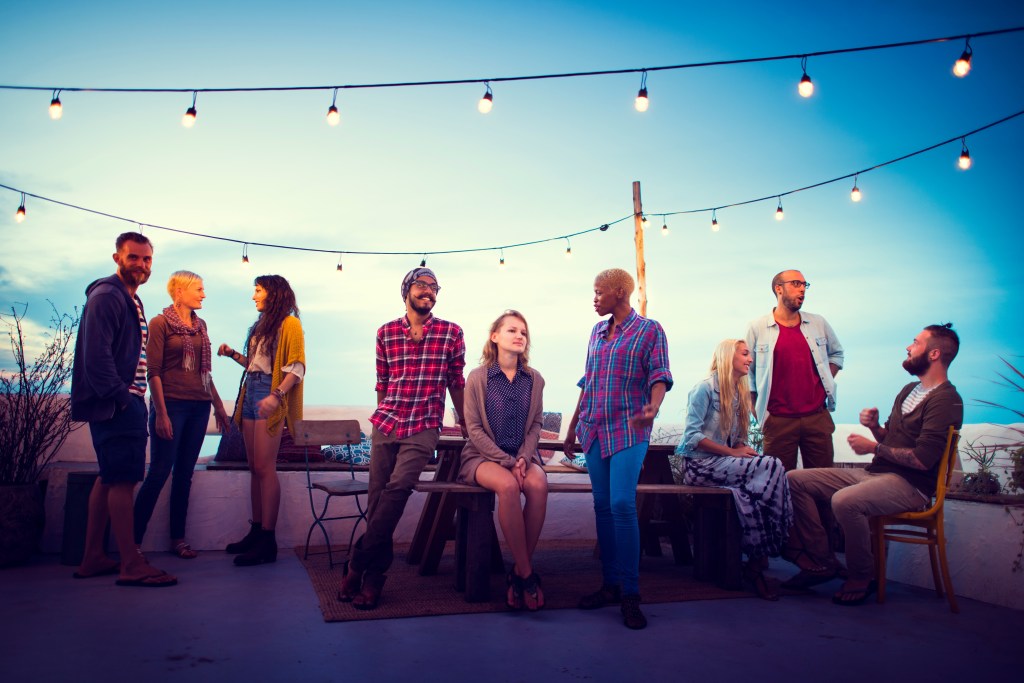2025, and we are still trying to make the third spaces happen. Or, at least, Brooklyn Crossing is. The luxury apartment building at Prospect Heights, Brooklyn, NY is now offering tenants a permit to expect more meetings as an incentive to build the community within its walls.
Crossing Brooklyn already come accumulated with accessories: a roof pool, a 5,200-square-foot gym, and even a sales machine where you can rent a Dyson vacuum-all starting at $ 4,025 per month for a bedroom. This rate is a $ 1,048 on New York City average rent, from the latest rent report from Realtor.com®.
And while benefits like pools and pelotons were once the crown of convenience packets, now more buildings are betting that “community” is what sells. From co-awaited events to curated social programming, the owners are marketing links as a larger increased-added building that what tenants really want, in addition to central air and horizon views, is a beautiful feeling.
Brooklyn crossing is not just in this change. The push of the building to promote the curated connection reflects an increasing tendency throughout the rental market: Social conveniences are becoming as important as physical ones.
Raising social facilities
Americans are moving less than ever before, making more pressure on the movements they actually make. Instead of treating apartments as temporary landing pads, tenants are increasing the spaces where the roots can place -and developers are getting attention.
But this is not just about raising the ante convenience. There is a response to deeper shifts in the way -and where people build community. In a post-fandemic world of hybrid and increasing loneliness, apartments are not just where we sleep. They are where we work, associate and build life. And in cities where homeownership is possible for many people, tenants are wanting sustainability and belonging to spaces that are not technically owed.
Social equipment promises a kind of shortcut for that elusive feeling of the home. The idea is: if the building provides the infrastructure event budgets, shared spaces, and even a coordinator of the experience of residents.
There is data to support this. Socialization with local friends and neighbors is one of the largest leaders of the people staying in their chosen neighborhood, according to a 2024 study that examined the mobility of residential in Oslo, Norway. Even in the US, where residential circulation is common, asset managers have found that the events expected by the tenant can improve retention and reduce the church.
For developers, math is simple: the connection is not just pleasant to have – it is profitable.
Community in Action: A closest look at Brooklyn’s intersection
But what does this social engineering look like in practice?
Brooklyn Crossing’s version for the curated community comes through the Brodsky organization’s “Neighboring Event” program. Tenants can get visa gift cards to partially refund the cost of social gatherings – as long as they are willing to secure invoices, upload some photos, and then aboard the interior messages of the building, reports brake. The goal is to make it easier -and perhaps a little more affordable -that residents mix with the people with whom they share walls and elevators.

Throughout the high -level Brodsky rental portfolio, events range from regular Saturday yoga to City Tower to Tiny Music Music Class for children in West End Towers up to one seasonal exits.
Some events have been received by the property itself; Others are organized by tenants with the help of an event scholarship, which is up to $ 500 for a single meeting. Socialization is accompanying, but with bills -and a reminder that even in the most friendly version of luxury living, the connection is still something of a transaction.
This strategy reflects a greater truth about modern rent: people want connections, but often do not have time, energy or infrastructure to create it themselves. And for buildings struggling to go out in a market flooded with similar equipment, offering a social life plug-and-play complete with budgeting support, it can simply be the advantage that seals rent.
How to find apartments with social equipment
If the curated connection is the comfort you are behind, start by looking for buildings that promote resident events or rank “community programming” among their features, such as 1515 surf in Brooklyn, NY. These offers may not always be ahead and the center on a rental list, so dig on the property website or ask directly the rental office: Do you organize regular events? Is there a tenant budget for gatherings? Are there shared spaces built for current use – not just shiny photos?
Terms like “Resident Experience Manager”, “Neighborhood events”, or even “inspired co-living” can mean efforts to build the community beyond the boiler comfort list. And do not underestimate the power of old fashion observation.
Of course, no amount of free or reimbursed pink pink parties can guarantee true friendship. But for tenants hoping in their future apartment even with a little more beauty, buildings like 360 Wythe are offering a pitch that goes beyond square views: stay here, and you can find your people.
Allaire Conte is a senior writer of advice covering real estate and personal finance trends. She previously served as Deputy Editor of Home Services at CNN underlined money and was a leading writer in Orchard, where she simplified complex real estate topics for everyday readers. It has a MFA in the non -fiction by Columbia University and a written BFA, literature and publication by Emerson College. When she is not writing about homeownership obstacles and shifts of the apartment market, she is bike around Brooklyn or baking cakes for her friends.
#apartment #building #NYC #paying #party #residents
Image Source : nypost.com